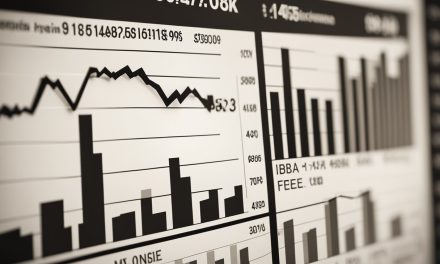Sector-specific income trading, particularly in the renewable energy sector, presents a unique opportunity for investors as the world continues to seek alternatives to fossil fuels. The growing demand for clean energy solutions, such as solar, wind, and hydroelectric power, creates a thriving environment for income trading in this sector. Technological innovations and engineering advancements play a critical role in shaping the renewable energy market, affecting both the efficiency and affordability of these resources.
Economic aspects such as market trends, investment opportunities, and government incentives have a significant impact on the renewable energy industry, making it crucial for traders to stay informed and adjust their strategies accordingly. Regulatory frameworks and policies also play a vital role in guiding the development and adoption of renewable energy sources, which in turn influences sector-specific income trading.
With the transition to cleaner technologies to address climate change and environmental challenges, the renewable energy sector sees both societal and economic benefits. Through sector-specific income trading, investors can tap into the growth potential of this industry while contributing to a more sustainable and eco-conscious future.
Key Takeaways
- Sector-specific income trading in renewable energy offers potential growth opportunities for investors.
- Technological advancements and government policies drive the development of the renewable energy sector.
- The shift towards sustainable energy sources provides both environmental and societal benefits.
The Concept of Sector-Specific Income Trading
Sector-specific income trading refers to the practice of investing and trading in securities that derive income from specific sectors, such as the renewable energy sector. This approach involves gaining exposure to the sector’s growth and income generation while taking into consideration the various factors that influence its performance, such as emissions, climate change, efficiency, policy, and regulations.
The renewable energy sector consists of diverse sources like wind, solar, hydro, biomass, and geothermal energy. Harnessing these resources for power generation contributes to reducing greenhouse gas emissions and mitigating climate change. Investors and traders are increasingly focusing on this sector due to its growth potential and favorable government policies.
Emissions trading schemes and carbon pricing are key regulatory mechanisms aimed at encouraging the adoption of renewable technologies and reducing the environmental impact of energy production. The International Monetary Fund (IMF) highlights the growing momentum of these policies worldwide, with over 60 carbon tax and emissions trading programs in place across different regions.
Efficiency and technological advancements also play a crucial role in the renewable energy sector. Higher efficiency in energy conversion and utilization helps in making these technologies more competitive with traditional fossil fuel-based energy sources. Moreover, continuous research and development efforts lead to improvements in the cost-effectiveness and performance of renewable technologies.
Policy and regulation frameworks are essential drivers of growth in the renewable energy sector. Governments worldwide are implementing supportive policies, such as feed-in tariffs, tax incentives, and renewable portfolio standards to stimulate investment and promote the use of clean energy resources. The U.S. Environmental Protection Agency (EPA) provides details on some of the existing policies and initiatives in the American renewable energy market.
In conclusion, sector-specific income trading, particularly in the renewable energy sector, offers opportunities for investors to capitalize on the growing demand for clean energy technologies and their income-generating potential. Traders must consider a myriad of factors, including emissions, climate change, efficiency, policy, and regulation, to successfully navigate this investment landscape.
Renewable Energy Sources
Understanding Solar Energy
Solar energy is one of the most popular renewable energy sources, providing clean, abundant power without harmful emissions. Solar energy is harnessed using solar photovoltaic (PV) panels that convert sunlight into electricity. As the demand for clean energy grows, so does the use of solar PV systems, which can be installed on rooftops, ground-mounted systems, or even integrated into building designs.
The efficiency of solar panels has increased significantly in the past few years, making them more cost-effective for residential and commercial applications. Solar energy is an essential part of the global transition to renewable resources, and it plays a critical role in reducing energy consumption and complying with environmental regulations.
The Dynamics of Wind Energy
Wind energy is a powerful renewable resource that has been rapidly expanding worldwide. Wind turbines capture the kinetic energy of moving air and convert it into electricity, which can then be fed into the grid or stored for later use. The growth of wind power is due in part to technological advancements, such as more efficient turbines and improved energy storage systems.
The environmental benefits of wind energy are significant, as it produces no air pollution, reduces reliance on fossil fuels, and requires minimal land use. However, wind power can be influenced by various factors such as wind speed and direction, making it a less predictable energy source compared to solar. Despite these challenges, wind energy remains an essential component of the renewable energy mix.
Exploring Hydro and Biomass Energy
Hydro energy, or hydropower, is a renewable energy source that relies on the natural movement of water to generate electricity. Water is channeled through turbines in dams or other water management structures, converting its kinetic energy into electrical power. According to the U.S. Energy Information Administration, hydropower is the largest source of renewable electricity in the United States.
Biomass energy, on the other hand, involves the utilization of organic materials to produce heat, electricity, or transportation fuels. Biomass resources include wood, agriculture residues, and various types of waste. Biomass can be converted into energy through processes such as combustion, gasification, or anaerobic digestion.
Both hydropower and biomass energy contribute to the diversification of renewable energy sources, offering potential advantages in terms of energy security and environmental sustainability. However, they also face specific challenges, such as the impact of dams on ecosystems or the potential competition between biomass feedstocks and food production. As the world continues its transition towards renewable resources, a balanced and diversified energy portfolio is essential for meeting future energy needs while minimizing environmental impacts.
Transition from Fossil Fuels
The energy sector is currently undergoing a significant transformation as it shifts from relying on fossil fuels like coal, oil, and natural gas to adopting renewable energy sources. This change is driven by two main factors: the need to reduce greenhouse gas emissions and the decreasing costs of renewable energy technologies.
Fossil fuels, including coal, oil, and natural gas, have been the predominant sources of energy production and consumption for decades. However, burning these fuels releases carbon dioxide and other greenhouse gases, which contribute to climate change. In order to mitigate the negative environmental effects and strive for carbon neutrality, there is a growing need to transition away from fossil fuel consumption towards more sustainable energy alternatives.
A variety of mitigation options have emerged in recent years to help facilitate this transition. One such approach involves the diversification of energy sources, which means incorporating a mix of renewables, such as solar, wind, and hydro power. This strategy has become increasingly viable as renewable technologies have advanced, resulting in lower costs and increased efficiency.
In addition to the expansion of renewable technologies, the reduction of carbon emissions can also be achieved through investments in carbon capture, utilization, and storage (CCUS) solutions. This method entails capturing carbon dioxide emissions from traditional fossil fuel facilities and storing or utilizing them for other applications. For example, captured carbon dioxide can be used in the production of synthetic fuels or stored underground in geological formations.
Furthermore, many companies and governments are adopting ambitious goals to reach carbon neutrality within the coming decades. Achieving these targets often requires a combination of multiple solutions, such as investing in renewables, improving energy efficiency, and implementing carbon pricing mechanisms. For businesses in the energy sector, adapting to these changes and pursuing environmentally focused strategies has become increasingly important for maintaining competitiveness in the industry.
In summary, the transition from fossil fuels to renewable energy is a necessary and ongoing process to combat climate change and reduce the risks associated with the depletion of finite resources. As this transition continues, investments in renewable energy technologies and carbon mitigation options will play a crucial role in shaping the future of global energy systems and contributing to a more sustainable future.
Technological Innovations and Engineering
Technological innovations and engineering have been driving forces in the development and adoption of renewable energy technologies. As we continue to transition to cleaner and more sustainable energy sources, it is important to recognize the impact of these advancements in various areas such as efficiency, cost, and integration of renewable energy resources.
One of the main areas that has benefited from technology is the efficiency of renewable energy production. Solar panels, for example, have experienced significant improvements in efficiency over the years, with the latest models being able to convert sunlight into electricity with greater effectiveness than their predecessors. Similarly, wind turbines have seen advances in blade design and materials, enabling them to extract more power from the wind at various speeds. This increased efficiency has contributed to the decreasing cost of renewable energy and made it a more competitive alternative to traditional energy sources.
The development of electric vehicles (EVs) is another prominent example of the influence of technological innovations in the renewable energy sector. Advancements in battery technology, such as the development of lithium-ion batteries, have allowed EVs to reduce charging times, increase their range, and become more accessible to consumers. The widespread adoption of EVs not only helps in reducing carbon emissions from transportation but also promotes the growth of renewable energy through demand for clean electricity.
In addition to efficiency improvements in individual technologies, there has been significant progress in integrating multiple renewable energy sources through smart grid systems and energy management systems. These systems allow for better control and coordination of various renewable energy sources, in turn improving the overall reliability and stability of the energy supply. Furthermore, advanced energy storage systems, like pumped hydro storage and battery storage systems, have made it possible to store excess energy generated from renewable sources, making it available for use during periods of low generation.
As renewable energy technologies gain traction, continuous investment in research and development is essential to continue driving innovation and engineering advancements. Collaboration between governments, private enterprises, and research institutions is crucial to spur progress in areas like materials science, nanotechnology, and AI-driven optimization that will lead to breakthroughs in renewable energy production, efficiency, and integration.
In conclusion, technological innovations and engineering play a pivotal role in the growth and adoption of renewable energy technologies. They enable a sustainable energy future and contribute to mitigating climate change through increased efficiency, better utilization of resources, and improved integration of diverse renewable energy sources.
Economic Aspects of Income Trading
Investment in Renewable Energy
Investing in renewable energy has gained traction in recent years, driven by the urgent need to curb greenhouse gas emissions, mitigate climate change, and support sustainable development. The total capital invested in renewable energy projects is determined by factors such as scale, costs, energy demand, financial incentives, and regulatory frameworks1.
Renewable energy investment opportunities differ across countries and regions due to variations in economic geography, resource availability, and policy frameworks. Competitive mechanisms, such as auctions and feed-in tariffs, have contributed to a significant decline in the costs of renewable energy technologies2. This cost reduction, in turn, has made renewable energy more attractive to investors, allowing them to diversify their portfolios and reduce long-term risks associated with fossil fuels.
Understanding Market Failures and Subsidies
Market failures often occur in the energy sector due to negative externalities associated with traditional energy sources. It is essential to design effective policies that internalize these externalities and create a level playing field for all energy sources3. Government interventions, such as subsidies, feed-in tariffs, and auctions, are key financial instruments used to address market failures and promote the growth of renewable energy4.
These financial mechanisms support various types of renewable energy projects and facilitate greater competition among project developers, leading to more innovative business models and increased overall efficiency.
| Financial Incentive | Description |
|---|---|
| Subsidies | Direct financial support provided by the government to lower the cost of renewable energy technologies and increase their deployment. |
| Feed-in Tariffs | Guaranteed price per kilowatt-hour for renewable energy producers, paid by the grid operators for a fixed contract duration. |
| Auctions | Competitive bidding processes in which renewable energy project developers bid for power contracts based on their expected generation costs. |
Affordability and Economic Growth
The affordability of renewable energy is crucial in determining its rate of adoption and contribution towards economic growth. As renewable energy technologies become more cost-competitive, they create new opportunities for job creation, industrial development, and poverty alleviation5. The relationship between renewable energy consumption and economic growth is often positive, with high-growth sectors, such as the services sector in high-income economies and the manufacturing sector in middle-income economies, benefiting the most from renewable energy6.
In conclusion, the economic aspects of income trading in renewable energy involve a complex interplay of factors, including investment, market failures, subsidies, and affordability. Understanding these factors is essential for policymakers, investors, and other stakeholders to make informed decisions that support sustainable economic growth and a cleaner energy future.
Footnotes
Regulatory Frameworks and Policies
International Policies and Agreements
International policies and agreements play a significant role in promoting the growth and adoption of renewable energy. One of the most notable global agreements is the Paris Agreement. Signed in 2016, the Paris Agreement aims to limit global temperature rise within the range of 1.5 to 2 degrees Celsius, and encourages participating countries to adopt renewable energy strategies and low-carbon technologies.
Two other influential international organizations are the International Energy Agency (IEA) and the Organisation for Economic Co-operation and Development (OECD). The IEA focuses on promoting energy security, environmental protection, and economic development, while the OECD provides a platform for countries to collaborate on creating sustainable development policies and best practices.
National and Regional Regulations
National and regional regulations also play a critical role in encouraging renewable energy adoption. Governments implement various energy policies and legislations to promote energy transition.
For example, in China, the government has adopted various policies to create a regulatory environment that supports renewable energy deployment. They have also established ambitious renewable energy targets to increase the share of non-fossil fuel energy sources.
National governments can also implement instrumental policies, such as:
- Tax incentives and subsidies
- Feed-in tariffs
- Renewable portfolio standards
- Energy efficiency standards
Such measures can stimulate investments in renewable energy technologies, including solar photovoltaic (PV), wind, and bioenergy.
Furthermore, regional regulations are increasingly employed to create a unified regulatory framework. A prime example is the European Union (EU), which has introduced the Emissions Trading System (ETS), covering energy-intensive industries, power generation, and aviation within Europe.
In conclusion, the regulatory frameworks and policies at international, national, and regional levels play a crucial role in promoting Sector-Specific Income Trading for renewable energy. To drive the energy transition, it is vital to adopt a coordinated and proactive approach to environmental governance, energy security, and environmental regulation.
Implications for Climate Change and Environment
Sector-specific income trading, particularly in the renewable energy sector, can have profound implications for climate change and the environment. One of the key benefits of such trading schemes is their potential to reduce greenhouse gas (GHG) emissions, which are the main drivers of global warming. By encouraging investment in cleaner energy sources like solar, wind, and hydro, these trading schemes can substantially reduce the amount of carbon dioxide emissions, as well as other harmful GHG emissions such as nitrous oxide and methane.
The Intergovernmental Panel on Climate Change (IPCC) has emphasized the importance of transitioning to renewable energy sources to meet global climate targets. Not only do renewable energy technologies produce little to no GHG emissions during operation, they also contribute to broader sustainability goals – such as improving air quality and reducing the need for harmful practices like fossil fuel extraction.
An essential component of these sector-specific income trading schemes is the implementation of an emissions trading system (ETS). ETS in the renewable energy sector can set market-based incentives for innovations that facilitate the performance of clean technologies. By setting a cap on emissions and allowing companies to trade emission allowances, an ETS can create a competitive environment that motivates industries to adopt cleaner and more efficient practices.
For instance, a company exceeding its emissions cap may purchase allowances from companies having surplus allowances after meeting their emissions targets. This dynamic promotes a competitive shift towards cleaner and low-carbon technologies, ultimately reducing the overall GHG emissions while adhering to the principles of a free market.
Moreover, these regulatory policies can have a cascading effect on the entire energy sector. The transition to renewable energy sources can reduce the reliance on traditional fossil fuels, leading to lower carbon dioxide and other GHG emissions. By strategically implementing sector-specific income trading in renewable energy, countries can move closer to achieving the long-term goals outlined in international agreements like the Paris Agreement.
In conclusion, sector-specific income trading has significant implications for climate change and environmental protection. By incentivizing renewable energy investments and fostering competition among industries to embrace cleaner technologies, such schemes can help society mitigate GHG emissions and adapt to the consequences of global warming.
Societal Impact
The transition towards renewable energy sources can have a wide range of societal impacts, such as improvements in health, progress in urbanization, and promotion of sustainable development goals. The increased use of clean energy sources, such as solar and wind, has the potential to reduce air pollution and decrease the health risks associated with exposure to harmful emissions from fossil fuels1. This improvement in air quality can lead to a reduction in respiratory and cardiovascular diseases, as well as a decline in premature deaths.
Urbanization often comes with increased energy demand, and the adoption of renewable energy can help to meet this demand in a sustainable manner. As cities grow, renewable energy technologies can be integrated into building infrastructure and urban planning, reducing the dependence on non-renewable resources. This can contribute to a more resilient and energy-efficient urban environment, in turn reducing the carbon footprint of urban centers 2.
Industrialization plays a crucial role in driving economic growth and development. As industries transition towards more sustainable practices, the incorporation of renewable energy can improve industrial processes and lessen the environmental impact of these activities. The transition towards renewable energy sources allows for a more sustainable approach to industrial production, by reducing the carbon emissions and minimizing the overall environmental footprint of industrial processes.
The adoption of renewable energy technologies is also in line with the Sustainable Development Goals (SDGs), particularly SDG 7, “Affordable and Clean Energy,” and SDG 13, “Climate Action.” Achieving these goals calls for a global shift towards clean energy sources, and the expansion of renewable energy infrastructure can contribute to reaching these targets3.
The push towards carbon neutrality is yet another societal aspect that is addressed through the proliferation of renewable energy sources. By investing in renewable energy projects and reducing dependence on fossil fuels, countries can work towards achieving carbon neutrality, thereby mitigating the impacts of climate change4.
In conclusion, the societal impact of a transition to renewable energy is multifaceted, addressing various aspects related to health, urbanization, industrialization, Sustainable Development Goals, and carbon neutrality. By incorporating renewable energy sources into various sectors, society as a whole can benefit from a cleaner, more sustainable future.
Footnotes
-
https://www.irena.org/-/media/Files/IRENA/Agency/Events/2019/Jun/Socio-economic-impacts-of-Renewable-Energy—Emanuele-Bianco.pdf?la=en&hash=32F0F78FFEB347740809F4B056E14A3E448624B1 ↩
-
https://www.un.org/sustainabledevelopment/sustainable-development-goals/ ↩
-
https://www.frontiersin.org/articles/10.3389/fenvs.2022.924857/full ↩
Frequently Asked Questions
What are the key trends in renewable energy investments?
In recent years, renewable energy investments have been driven by factors such as technological advancements, supportive government policies, and increased awareness of the consequences of fossil fuel-based energy generation. Key trends include the decreasing costs of solar and wind power technologies, the growth of corporate energy procurement, and investments in energy storage solutions that facilitate grid integration of renewables.
How does WACC affect the valuation of renewable energy projects?
The Weighted Average Cost of Capital (WACC) is an important factor in determining the valuation of renewable energy projects, as it represents the average rate of return an investor would require to invest in such a project. A higher WACC implies higher risk and may lead to lower project valuations, making it more challenging to secure funding for the development and implementation of renewable energy projects.
What is the impact of accounting standards like IFRS or GAAP on renewable energy credits?
Accounting standards such as IFRS and GAAP play a significant role in the renewable energy industry, particularly in terms of how Renewable Energy Credits (RECs) are recognized by companies. The application of these standards has a direct impact on a company’s financial reporting and, subsequently, its perception among investors. Appropriate accounting treatment of RECs is essential for transparent financial statements, allowing stakeholders to accurately assess the company’s position within the renewable energy market.
What is the role of the IEA World Energy Investment in the renewable energy sector?
The International Energy Agency (IEA) World Energy Investment report provides valuable insights into the global investment trends in the energy sector, including renewable energy. The report is an important reference tool for policymakers, investors, and industry participants, as it provides an overview of present and future investment needs, identifies potential barriers for funding, and highlights necessary actions to accelerate clean energy transitions across various sectors.
How is the energy transition expected to influence sector-specific income trading in 2023?
The ongoing energy transition will likely continue to shape sector-specific income trading in 2023, as demand for cleaner energy sources grows, and governments pursue decarbonization efforts. Renewable energy projects are expected to attract significant investments, creating profitable opportunities for traders in the green energy space. Additionally, as policies and regulations increasingly support renewable energy adoption, the renewable energy sector may experience substantial growth, potentially leading to a more active and dynamic market for sector-specific income trading.
What factors contribute to sector-specific income trading in the renewable energy industry?
Various factors influence sector-specific income trading in the renewable energy industry. These include government policies and incentives, technological advancements, energy market dynamics, and macroeconomic factors such as interest rates and foreign exchange rates. Investors and traders in the renewable energy space need to remain cognizant of these factors to make informed decisions and optimize returns on their investments.
Conclusion
The increasing dependence on finite non-renewable energy raises serious environmental concerns and emphasizes the urgent need for a more sustainable alternative, such as renewable energy. Renewable energy, including sources like solar, wind, and hydropower, can significantly reduce carbon emissions while fostering economic growth and sustainable development.
The transition to renewable energy is essential for addressing climate change and ensuring global energy security. However, there are still challenges and controversial aspects that policymakers and economists must confront. Major obstacles include financing, technology, policy, and social factors that could hinder the wide-scale deployment of renewable energy infrastructure.
In order to facilitate a successful energy transition, the following steps are crucial:
- Investment: Encourage private and public financing to support research, development, and deployment of new renewable energy technologies.
- Policy: Implement government policies such as tax incentives, carbon pricing, and renewable energy standards to promote the adoption of clean energy solutions.
- Education: Increase public awareness about the benefits of renewable energy and the importance of reducing dependence on fossil fuels.
- Innovation: Encourage technological innovations that improve the efficiency, cost-effectiveness, and reliability of renewable energy systems.
By taking these steps, we can make substantial progress toward a renewable energy-driven future and pave the way for a more sustainable and environmentally-friendly global energy system.







Recent Comments